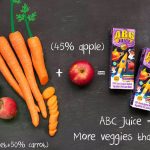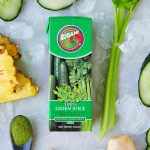Good Nutrition and Our Youth
A healthy child is a happy child, which should make healthy eating top of the priority list for our families. Children are naturally energetic and lively, and the food that a young child eats will provide the energy and nutrients needed to grow and thrive. Children are our country’s future teachers, parents, lawyers, CEOs and healthcare professionals, making it vital for parents and caregivers to be role models for the next generation of healthy eaters.
The State of the (Youth) Nation
Local studies show that our children are not consuming enough fruits and vegetables. Tuck shop purchases and soft drink and fast food consumption are on the rise. One in 5 South African children skip breakfast and more than half don’t take a lunch box to school each day. This could lead to a generation of unhealthy adults at higher risk for obesity and chronic diseases like diabetes and heart disease if not urgently addressed.
What a child eats in their early years can have lifelong consequences on their eating habits, good or bad. This is why it is important that we teach our children about good nutrition from a young age, helping them to establish a healthy relationship with food that lays a solid and sound foundation for healthy eating habits. Food provides more than just nutrition: it is also important for a child to develop good hand-eye coordination and skills, physical growth, strong bones, improve concentration at school, and better sleep patterns.
The Healthy Eating Balance
Just like the playground see-saw, your child’s diet needs to be balanced with a combination of foods from each of the three macronutrient groups: carbohydrates, protein, and fats.
Carbohydrates are the body’s first choice for fuel, a source of energy to support a healthy and growing child. Just like with adults, it is important to emphasise the importance of including complex and minimally processed carbohydrates in the diet (e.g. fruit, vegetables like sweet potato, potato and corn, wholegrain bread, brown rice, wholewheat pasta, oats), while saving sugary foods cakes, soft drinks, and sugary cereals for special occasions. Part of the carbohydrate group, sugar has very little nutritional value yet contains a lot of energy.
Protein provides the building blocks for muscle, growth, and a healthy immune system. Protein-rich foods include fish (especially fatty fish like salmon, trout, pilchards, mackerel and herring), skinless chicken, lean red meat, eggs, dairy, and plant proteins such as lentils, beans and chickpeas.
It is also important to include healthy fats as part of the child’s diet. Fats provide the fat-soluble vitamins A, D, E and K, with monounsaturated fats (e.g. avos, olives, nuts, nut butters) much healthier than saturated fats (e.g. butter, cream, coconut oil, bacon, chicken skin, fatty meat) because these fats protect the heart, keep the immune system strong, and provide essential fatty acids for inquisitive eyes and developing young brains.
Walk the Walk and Talk the Talk
Research has shown that the child’s acceptance of new food is highly influenced by parents (especially the mother) and siblings. If you do not want your child to eat certain foods, do not bring them into the home or be seen eating them. Set an example by allowing your child to see you trying new and interesting foods. Choose a new and different fruit or vegetable next time at the supermarket and encourage your child to do the same. Having chosen the food will mean your child takes responsibility and ownership of it and may be more likely to eat it.
“A veggie and fruit drink like ABC Juice, rich in the nutrients from fresh
apple, beetroot and carrot, can be a healthy choice to form part of a
balanced diet, in combination with eating whole fresh fruit and veggies for
fibre. Veggies in any form – cooked, frozen, or juiced – are far better than
no vegetables at all.”
Download the “My Healthy Eating Plate” activity to assist in teaching your children about good nutrition the fun way!”
References
- Draper C, Basset S, de Villiers A, Lambert E, and the HAKSA Writing Group. Results from South Africa’s 2014 Report Card on Physical Activity for Children and Youth. Journal of Physical Activity and Health; 2014: 11(S1), S98-S104.
- Hoosain E, Dwane N, Reddy P, Jacobs L, Shisana O, Labadarios D, et al. The South African National Health and Nutrition Examination Survey, 2012: SANHANES-1. Cape Town: HSRC Press; 2013. (Available from: www.hsrc.ac.za/en/researchoutputs/view/6493.)
- Ogata B, Deucht SA, Lucas BL. Nutrition in Childhood In: Mahan LK, Raymond JL, editors. Krause’s Food and the Nutrition Care Process. 14th St Louis, Missouri: Saunders Elsevier; 2016;314 – 330.
- Position of the Academy of Nutrition and Dietetics: Nutrition Guidance for Healthy Children Ages 2 to 11 Years. J Acad Nutr Diet. 2014;114:1257-1276.
Author Bio:
Hello, I’m Monique.
Monique Piderit, RD (SA) is a registered dietitian at Nutritional Solutions with a Masters degree in dietetics, and PhD candidate at the University of Pretoria. Guided by evidence-based nutrition, Monique believes in an integrate approach to wellness where the key to being healthy is to adopt small yet sustainable changes to your lifestyle.




